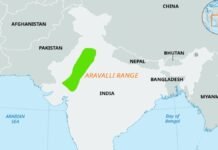
New Delhi: There are two borders at the center of the dispute over the 165-km-long border between Assam and Mizoram. Both of these are associated with the British period. Both the states are unable to agree on which limit should be followed. In the middle of the 19th century, British tea gardens came to the Cachar plains – the Barak Valley. It now includes Cachar, Hailakandi, and Karimganj districts. Their expansion caused problems with the Mizo people. The residential area of the Mizo people was Lushai Hills. In August 1875, the southern boundary of Cachar district was shown in the Assam Gazette. Mizo says that for the fifth time in 1875, the British drew the boundary between the Lushai Hills and the Cachar plains. This time the Mizo leaders were consulted. Two years later, this also became the basis of the Inner Line Reserve Forest boundary in the gazette.
New border made again in the year 1933
However, in the year 1933, a new boundary was created between Lushai Hills and the then princely state of Manipur. It said that the border of Manipur started from the trijunction of Lushai Hills, Cachar district of Assam, and Manipur state. Mizos do not accept this limit. He talks of the boundary of the year 1875 which was drawn in consultation with his leaders.

After independence, the North-Eastern states and union territories were separated from Assam, which was followed by Nagaland in 1963, Arunachal Pradesh, Meghalaya, and Mizoram in 1972. Officials said the status quo was to be maintained in the no man’s land in the border area under an agreement signed between Mizoram and Assam.
However, violence broke out in February 2018 when the students’ union MZP (Mizo Zirlai Pawal) built a rest house for farmers on land claimed by Assam, which was demolished by the Assam Police. Last October, clashes broke out twice a week in Lailapur (Assam) over land claimed by Mizoram.







































